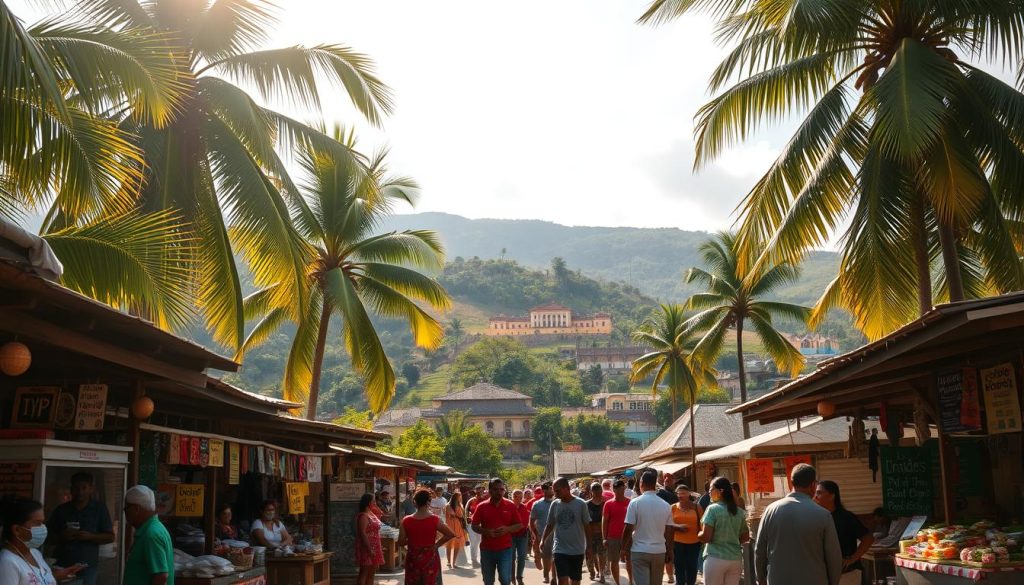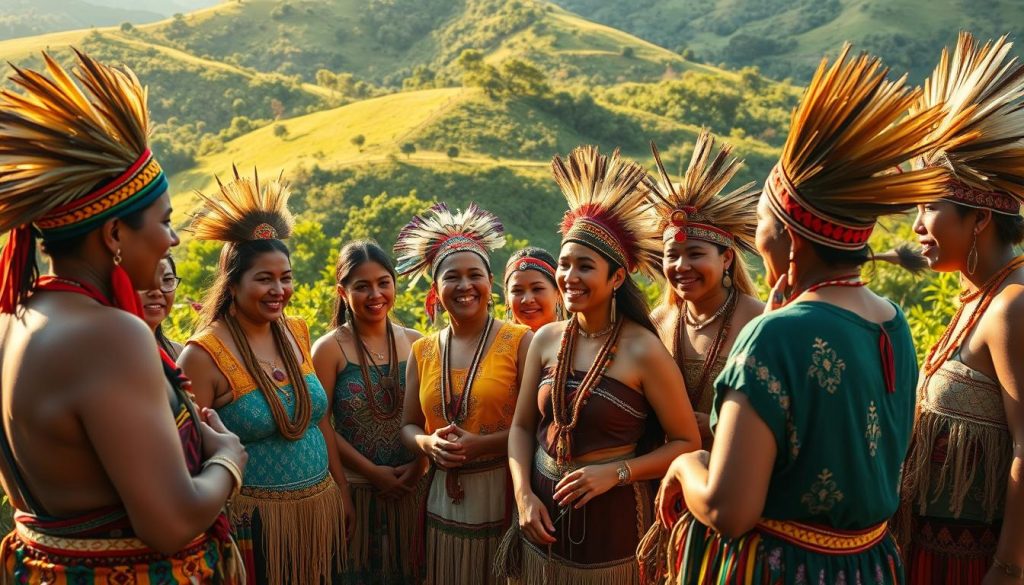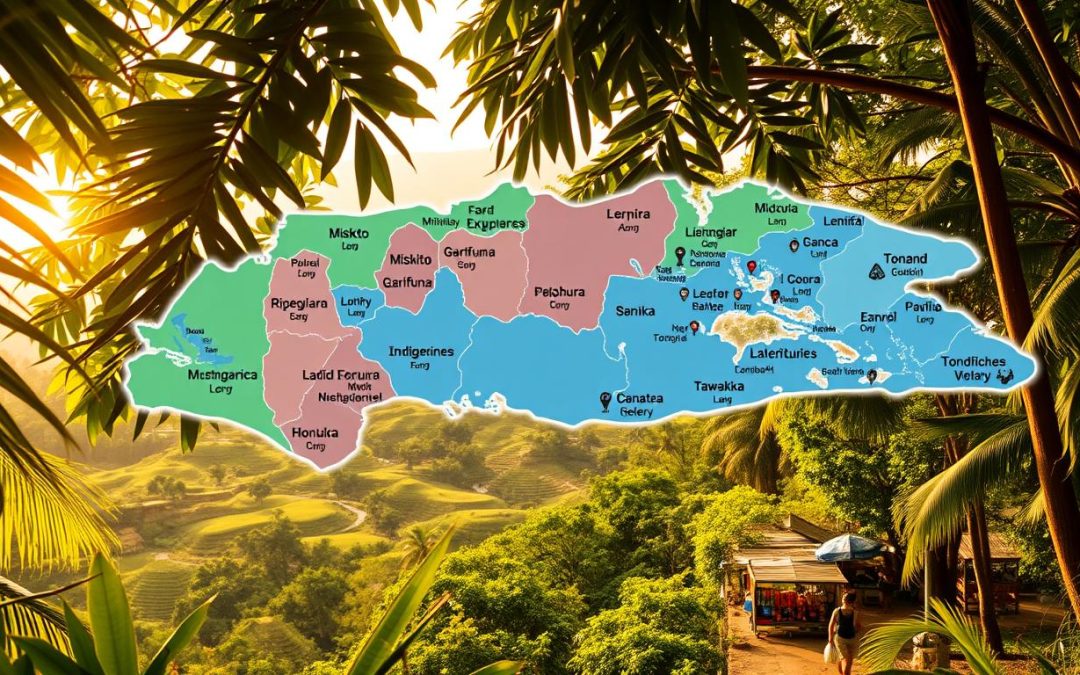Have you ever wondered how a single country can be home to such a rich tapestry of languages? In Honduras, the answer lies in its vibrant history and cultural diversity. Spanish is the primary language, spoken by the majority of its people. But did you know there’s much more to the story?
Beyond Spanish, indigenous and immigrant languages add unique flavors to the nation’s linguistic landscape. From Garifuna to Miskito, these languages reflect centuries of cultural exchange and heritage. This blend makes Honduras a fascinating place for anyone curious about language and culture.
Ready to dive deeper? Let’s explore the languages that shape this Central American gem.
Key Takeaways
- Spanish is the primary language in Honduras.
- Indigenous languages like Garifuna and Miskito are still spoken.
- Immigrant languages contribute to the country’s linguistic diversity.
- Honduras’ history plays a key role in its language variety.
- Exploring these languages offers insight into the nation’s culture.
Overview of Honduras’ Linguistic Landscape
The story of language in this Central American nation is a journey through time and culture. From ancient roots to modern times, the way people communicate reflects its vibrant history and diverse population.

Historical Context of Language Development
Before the Spanish conquest, dozens of indigenous dialects thrived. The Mayan civilization, for example, left a lasting legacy in the region. However, the arrival of the Spanish in the 16th century brought Castilian as the dominant language.
Despite this shift, many indigenous communities preserved their native tongues. This blend of languages highlights the resilience of local cultures during colonial rule.
Modern Demographics & Usage
Today, Spanish is the primary language, spoken by about 90% of the population. English is also widely used, especially in the Bay Islands and along the northern coast. This reflects the influence of tourism and international trade.
The government has played a key role in shaping language use. Policies promoting Spanish in education and media have reinforced its dominance. Meanwhile, efforts to preserve indigenous languages continue to gain support.
| Language | Percentage of Speakers | Regions |
|---|---|---|
| Spanish | 90% | Nationwide |
| English | 5% | Bay Islands, Northern Coast |
| Indigenous Languages | 5% | Rural Areas |
Understanding this linguistic landscape offers a glimpse into the nation’s identity. It’s a testament to how history, population shifts, and government policies shape the way people connect.
Spanish: The Official Language of Honduras
From classrooms to courtrooms, Spanish is the backbone of communication. It’s not just a language—it’s a tool that unites people across the nation. Whether you’re in a bustling city or a remote area, Spanish is the common thread that connects everyone.
In schools, Spanish is the primary medium of instruction. Every person, regardless of their background, learns and uses it daily. This ensures that students from different communities can access the same opportunities. It also fosters a sense of unity among diverse groups.
Role in Education and Government
Spanish dominates the education system, from elementary schools to universities. Textbooks, exams, and lectures are all conducted in Spanish. This prepares students for a future where they can contribute to their communities and the nation as a whole.
In government, Spanish is the language of law and policy. Official documents, legal proceedings, and public announcements are all in Spanish. This ensures clarity and consistency in governance. It also makes it easier for every person to understand their rights and responsibilities.
While Spanish is dominant, indigenous languages still hold cultural significance. Many communities preserve their native tongues, passing them down through generations. This coexistence reflects the nation’s rich heritage and diversity.
| Institution | Role of Spanish |
|---|---|
| Education | Primary language of instruction |
| Government | Language of law and policy |
| Community | Unifying language across regions |
Spanish’s role in education and government highlights its importance in shaping the nation’s identity. It’s a bridge that connects people, ideas, and opportunities, ensuring progress for all.
Indigenous Languages in Honduras
Step into the vibrant world of indigenous dialects that define the soul of this nation. These languages are more than just a means of communication—they’re a testament to centuries of cultural resilience and heritage. From the rhythmic tones of Garifuna to the ancient whispers of Ch’orti’, each dialect carries a unique story.

Prominent Indigenous Dialects
Among the many indigenous dialects, Garifuna stands out as a symbol of Afro-Caribbean influence. Spoken by nearly 100,000 people, it’s a blend of Arawak, Carib, and African roots. “Garifuna is not just a language; it’s a celebration of our ancestors,” says a local elder.
Ch’orti’, a Mayan language, is another gem. Though spoken by only a handful of people today, it connects modern communities to their ancient past. Lenca, once widely spoken, now survives in cultural practices and traditions, keeping its legacy alive.
Influence on National Identity
These dialects play a vital role in shaping the national identity of this Central American country. They remind people of their roots and foster a sense of pride in their heritage. Festivals, music, and rituals often incorporate indigenous languages, making them a living part of daily life.
For example, Garifuna Punta music is a cultural treasure that combines language, rhythm, and dance. It’s a powerful way to preserve and share traditions with younger generations. Similarly, Ch’orti’ rituals during harvest seasons highlight the deep connection between language and nature.
“Our languages are the heartbeat of our culture. They carry the wisdom of our ancestors and the hope for our future.”
Despite challenges, efforts to preserve these dialects are gaining momentum. Schools and community programs are teaching indigenous languages, ensuring they remain a vibrant part of the nation’s identity. By embracing this linguistic diversity, people honor their past while building a more inclusive future.
Extinct and Endangered Languages
Languages, like stories, can fade away if not preserved. Across the national landscape, many dialects are on the brink of extinction. This loss is not just about words—it’s about losing a piece of cultural identity.

In certain departments, languages like Lenca are now spoken by only a handful of semi-speakers. These regions, often influenced by caribbean culture, face significant challenges in keeping their linguistic heritage alive. Cultural shifts and historical pressures have pushed many dialects to the edge.
Efforts to revive these languages are gaining momentum. Government programs and community initiatives are working to document and teach endangered dialects. Schools in rural areas are incorporating indigenous languages into their curriculum, ensuring younger generations can connect with their roots.
“Every language lost is a library burned. We must act now to save what remains.”
Examples like Lenca highlight the urgency of these efforts. With only a few speakers left, the race to preserve these dialects is critical. The national importance of this mission cannot be overstated—it’s about safeguarding history for future generations.
From community workshops to digital archives, every step counts. By supporting these initiatives, we can ensure that the voices of the past continue to echo into the future.
Immigrant and Minority Languages in Honduras
The blend of immigrant and minority languages adds a unique layer to the nation’s cultural fabric. From the Bay Islands to bustling urban centers, these tongues bring fresh perspectives and enrich daily life. They may represent a small term of the overall linguistic profile, but their impact is profound.

In the Bay Islands, Creole English is a vibrant part of the local identity. This language, rooted in Afro-Caribbean heritage, is spoken by many residents. It’s not just a way to communicate—it’s a symbol of the island’s history and cultural resilience.
In cities, languages like Arabic and Armenian are also heard. These immigrant tongues reflect the diverse backgrounds of those who’ve made this country their home. They contribute to a rich tapestry of cultural exchange, making communities more dynamic and inclusive.
Impact on Local Communities
Immigrant languages play a key role in schools and community interactions. In some areas, bilingual education programs help students connect with their heritage while learning Spanish. This approach fosters pride in cultural roots and promotes understanding among peers.
Beyond education, these languages influence local traditions and celebrations. Festivals often feature music, food, and customs tied to immigrant cultures. This creates opportunities for everyone to learn and appreciate the diversity around them.
“Our language is more than words—it’s a bridge that connects us to our past and each other.”
While immigrant languages may be a small term in the broader linguistic landscape, their contributions are invaluable. They remind us that diversity is a strength, enriching communities and shaping a more vibrant future.
Language Use in Daily Life and Media
Language shapes how people connect, from casual chats to media broadcasts. It’s not just about words—it’s about how people share ideas, stories, and emotions. In this vibrant setting, communication takes many forms, including sign language, which plays a vital role for the hearing-impaired community.
In everyday life, language is everywhere. From bustling markets to quiet homes, it’s the glue that holds communities together. In the bay areas, you’ll hear a mix of Spanish, English, and Creole, reflecting the region’s diverse heritage. This blend makes every conversation unique and meaningful.
Media also plays a key role in shaping language use. Television, radio, and social platforms bring stories to life, often in multiple dialects. This ensures that local traditions and modern trends coexist. For example, indigenous languages are featured in cultural programs, helping preserve their legacy.
Here’s a quick look at how language integrates into daily life:
| Setting | Language Use |
|---|---|
| Markets | Spanish, Creole, Indigenous dialects |
| Media | Spanish, English, Indigenous languages |
| Schools | Spanish, Bilingual programs |
| Communities | Sign language, Immigrant languages |
Whether it’s a lively debate in the bay or a heartfelt conversation in sign language, every interaction matters. These moments remind us that language is more than a tool—it’s a bridge that connects people, cultures, and ideas.
By embracing this diversity, communities thrive. From traditional practices to modern media, language continues to evolve, ensuring that every voice is heard. It’s a testament to the power of communication in shaping a vibrant and inclusive society.
Cultural Heritage and Language Preservation Initiatives
Preserving languages is like safeguarding the heart of a culture. Across the nation, communities and governments are working together to ensure that every dialect, from Lenca to Garifuna, remains a vibrant part of daily life. These efforts not only protect languages but also serve as a home for cultural traditions.
Community and Governmental Efforts
Local initiatives play a crucial role in keeping languages alive. In rural areas, programs focus on teaching indigenous dialects like Lenca to younger generations. Schools often incorporate these languages into their curriculum, ensuring that children grow up connected to their roots.
Government agencies also support these efforts. Policies promote the use of indigenous languages in media and education. For example, cultural festivals often feature performances in Garifuna, celebrating its rich heritage. These projects highlight the profile of endangered languages, bringing them into the spotlight.
“Our language is our identity. Preserving it is preserving who we are.”
Global Significance
These preservation efforts have gained international attention. Organizations like UNESCO recognize the importance of languages like Garifuna, labeling them as part of humanity’s intangible cultural heritage. This global support helps fund local projects and raises awareness about the need to protect linguistic diversity.
Collaborative efforts between communities and international groups ensure that languages are not just preserved but celebrated. From digital archives to cultural exchanges, every initiative contributes to a brighter future for these dialects. By working together, we can ensure that every language, including Lenca, continues to thrive.
These initiatives remind us that language is more than words—it’s a bridge to our past and a foundation for our future. By safeguarding this heritage, we create a home for cultural traditions and ensure that every voice is heard.
Key Insights: Honduras: Official and widely spoken languages
Understanding the language landscape offers a window into the nation’s identity. From bustling cities to quiet villages, the way people communicate reveals a rich tapestry of cultural diversity. Spanish dominates, but regional dialects and minority languages add unique flavors to daily life.
Statistical Overview of Language Distribution
Spanish is the primary language, spoken by about 97% of the population. It’s the backbone of communication in schools, government, and media. Indigenous languages, though less prevalent, are still vital in rural areas. Creole English is widely used in the Bay Islands, reflecting the region’s Afro-Caribbean heritage.
Here’s a quick breakdown:
- Spanish: 97% nationwide.
- Indigenous Languages: 3%, primarily in rural regions.
- Creole: Significant in the Bay Islands.
Regional Language Variations
Language use varies across regions. In urban centers, Spanish is dominant, while rural areas preserve indigenous dialects. The Bay Islands stand out with their use of Creole, a blend of English and African influences. Sign language also plays a crucial role, especially in communities with hearing-impaired individuals.
Key regional differences include:
- Urban areas: Spanish is universal.
- Rural areas: Indigenous dialects like Garifuna and Miskito thrive.
- Bay Islands: Creole is a cultural cornerstone.
These variations highlight the nation’s linguistic diversity. Whether it’s Spanish, Creole, or sign language, each dialect contributes to the vibrant cultural mosaic. By understanding these patterns, you gain deeper insight into the heart of this nation.
Conclusion
Exploring the linguistic tapestry of this nation reveals a story of resilience and unity. From Spanish to indigenous dialects, each language reflects a unique cultural heritage. Institutions play a vital role in preserving these dialects, ensuring they remain a vibrant part of daily life.
Efforts to protect languages like Garifuna and Lenca highlight the importance of cultural identity. These initiatives, supported by the lempira-funded programs, foster a sense of pride and continuity. They remind us that language is more than words—it’s a bridge to our past and a foundation for our future.
As you reflect on this linguistic diversity, consider how it mirrors broader cultural and political dynamics. By appreciating this unique profile, you contribute to a future where paz and cultural integrity thrive. Dive deeper into this fascinating world, and let it inspire your understanding of this nation’s heart and soul.
The above is subject to change.
Check back often to TRAVEL.COM for the latest travel tips and deals.
Here are some Tours & Sightseeing suggestions that might pique your interests!
